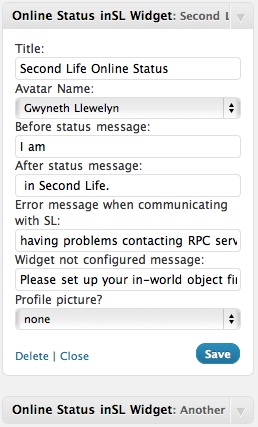PROJECTION AND EXTERNALIZATION.
In the late 70s to early 80s, Sherry Turkle researched people’s reactions to Eliza, and in doing so she found that its appeal had little to do with either its conversational or psychotherapeutic capability. Instead, people treated it like a kind of diary that had the added appeal of helping them hone their portrayal of their inner being. One participant recalled how “I put my ideas out and see what my ideas are… I’m not talking to it. It’s more that I type and get everything out that is in my head… I see myself, but nobody sees me”.
For this person, Eliza was not an ‘other’ but rather an extension of her own mind. In that sense, it is a continuation of a general tendency to project oneself out into the world using whatever cultural materials are available. The Web is particularly useful for this kind of purpose, and because of this it can provide psychoanalytic conditions as well as metaphors for postmodernism.
In a Freudian analytic situation, the analyst will sit behind the patient. The reason they do this, is so that the patient will come to think of the psychologist as a disembodied voice. This encourages ‘projection’. The patient projects past feelings and thoughts onto the analyst. Carl Jung’s psychology encouraged the individual to become familiar with a range of universal archetypes, including other-gendered selves called ‘anima’ (if the subject is male) and ‘animus’ (if the subject is female). Archetypes also turn up in the practices of Dr Yannon Volcani, who believes we can gain better control over our personalities if we nurture and develop them as external to ourselves. Since ‘projection’ and ‘externalization’ play important roles in psychoanalysis, we can see how social networks and online worlds might naturally lend themselves to analytic situations.
For one thing, the user always has the option of opening up extra windows, perhaps to conduct a private conversation with one person among a group, or maybe to have a presence in several concurrent events. People who study MMORPGs and online worlds talk of the author as displaced and distributed, partly because such worlds grow from the collaborative efforts of many people, but also because each user can have a disembodied presence all over the Web, or embodied in many virtual locations and worlds, thanks to multiple avatars.
The avatar itself is perhaps the strongest influence on externalizing aspects of identity. In RL, the individual sees the world through a first-person perspective. You can opt to see SL from the same viewpoint, but the default view is a third-person perspective. This means you login to SL and see your avatar as though it were somebody else who is somewhere else (unless, that is, you designed your home location to match your physical surroundings). The ability to exert subtle and dramatic changes over your avatar’s physical appearance further encourages externalization of archetypes. No longer is a woman’s ‘animus’ a mere abstract concept. He is there, made digital flesh, building up his social networks and personal history whenever she logs into his account.
It is very rare for an online identity to stay confined to its place of origin. This leads to what Molatov Alva called the ‘avatarization of social networks’. The name ‘Extropia DaSilva’ originated in SL, but since then it has been adopted as an email address, a Facebook and Flickr account, and it also appears as the author of essays or comments posted on various blogs. Many online account holders go much further, wilfully mashing up their 1st and 2nd life identities, sometimes to the extent of losing any distinction between the two.
Of course, no online world actually exists separate to the real world. The latter is, after all, where those oh-so-important computers and servers, and the energy required to run them, resides. But we can acknowledge this link to the physical world while also admitting an element of unreality to SL. True photorealism is an immensely difficult feat to accomplish, and one that no realtime rendering process can currently achieve. Online worlds therefore have a rather cartoonish look about them. In fact, at first glance you would probably think someone logged in to SL was playing a videogame.
PLAY THERAPY.
Never tell an SL resident that their world is a ‘game’. It tends to be viewed as demeaning, and it really is inaccurate if the comparison is with an MMORPG like ‘Everquest’. But, maybe it is not online worlds that we are belittling when we strongly deny that SL is a game, but the act of play itself. The psychoanalyst Erik Erikson emphasised the importance play has in building one’s identity:
“[…] Play is the infantile form of the human ability to deal with experience by creating model situations and to master reality by experiment and planning… In reconstructing the model situation, he redeems his failures and strengthens his hopes. He anticipates the future from the point of view of a shared and corrected past. No thinker can do more and no playing child can do less”.
By placing us in dual roles of observer and participant; by blurring the boundaries between fact and fiction; by enabling one to externalize archetypes and project them onto avatars that other people react to, online worlds lend themselves well to play therapy. Psuedonymity and anonymity have much to do with this. One can always set up an account in order to explore majors, minors and micros that might have long-lasting consequences if tried out in RL or through one’s ‘main’ avatar. Sherry Turkle has pointed out how “lack of information about the real person to whom one is talking, the silence into which one types, the lack of visual cues, all encourage projection”. Studies have shown that more than 75% of users feel safer speaking their mind when using an avatar.
The relationship between psychology and the Web is not one way. Like anything else, psychiatric symptoms tend to reflect the larger culture. It is interesting to note, then, how very much rarer Dissociative Identity Disorder was in the 1970s, compared to 20 years later. Clinical psychology texts of the 70s barely considered DID worth mentioning, viewing the condition as affecting only one in a million. There was typically one ‘alter’ personality in each of the few cases that were studied. Much seemed to have changed 20 years later. Not only did each subject have many more ‘alter’ personalities of different ages, races, genders and sexual orientations (sometimes as many as 16 alters per person), there were also many more reports of the condition itself. One cannot help but wonder if the rise of the Web, and the ability to cycle through aspects of personality constructed online and distributed via alt accounts, played a part in bringing about this change.
DID is not a healthy mental state, and it is worth considering why not since it tells us something about what is (and what is not) healthy roleplay. Although it is commonly known as multiple personality disorder, that is somewhat misleading because the condition creates disconnected minors and micros, rather than ‘majors’ aka fully-developed personalities. A person with DID has memories that are experienced in isolation from the rest of the ‘mindweb’.
Where online identity exploration is concerned, thinkers have tried to resolve an apparent contradiction. How can a personality fragmented into multiple online presences, distributed over several windows, avatars, etc, nevertheless be coherent? One idea is that the ability to open up several windows imposes a certain distance between the personalities projected into each one, but they remain close enough to enable the user to freely move between them. According to Turkle, “the essence of this self is not unitary, nor are its parts stable entities. It is easy to cycle through its aspects and these themselves are changing through communication with each other… Having literally written our online presence into existence, we are in a position to be more aware of what we project into everyday life”.
But projection is only truly beneficial if it is a back-and-forth process. In other words, what happens online must lead to what Wagner James Au calls ‘mirrored flourishing’. If your avatar’s successes and triumphs give you a sense of achievement or wellbeing, or even if a bad experience enables you to learn something useful, that is mirrored flourishing in action. Some people feel this is best achieved by developing an online presence that matches their physical self as closely as possible. For others, it is the ability to create idealized or fantasy characters that best serves this function. However, if your online personae is too different from what you believe yourself to be capable of, that makes it harder to integrate online experiences into one’s ‘actual’ life. Psychoanalysis differentiates between ‘working through’ and ‘acting out’ past experiences. The latter refers to a restaging of old conflicts in new settings, a repetition in which one re-enacts the past but does not learn from it. In contrast, ‘working through’ involves externalizing and projecting memories with the express purpose of addressing old issues in new ways. One can ‘act out’ or ‘work through’ while engaged in identity exploration online. It all depends on whether or not you have developed characters whose experiences can be applied in your actual life.
According to Sherry Turkle, “Internet experiences help us develop models of psychological well-being that are in a meaningful sense postmodern: They admit multiplicity and flexibility. They acknowledge the constructed nature of reality, self, and other. We are encouraged to think of ourselves as emergent, fluid, decentralized… ever in process”.
SO WHERE IS THE HARM?
This all sounds generally positive and beneficial. Why, then, did so many participants in a discussion about alts, have something bad to say about it? What could possibly be harmful about identity exploration? The next essay will consider such questions, and also consider arguments that run contrary to the idea that online social networking encourages multiplicity.






